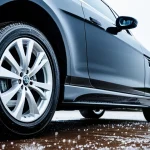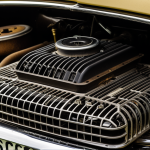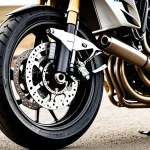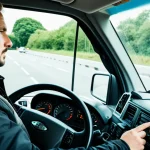Compatibility with Classic UK Cars
When considering the installation of adaptive cruise control in classic UK cars, understanding your vehicle’s compatibility issues is paramount. Several factors play into determining if a classic car is vehicle ready for such a modern upgrade.
Evaluating Your Car Model
Begin by thoroughly assessing the specific make and model of your classic car. Some vehicles may inherently be more amenable to modifications due to their vehicle readiness, while others might require extensive work. It is essential to ensure that your car’s electrical and mechanical systems can support the new technology.
A découvrir également : Unlocking UK Compliance: The Definitive Guide to Installing Aftermarket Body Kits
Identifying Required Modifications
Potential modifications might include updates to the vehicle’s electrical system or installing additional sensors. Investigating the specific needs for your model can save time and resources during installation. It’s beneficial to consult with professionals who specialise in classic car modifications to grasp the scope of work needed.
Understanding System Limitations
While the benefits of technology like adaptive cruise control are appealing, it’s crucial to acknowledge the system limitations when applied to older vehicles. Classic cars are often not designed with modern digital systems in mind, and integration might necessitate compromises or additional supporting modifications. Recognising these challenges in advance can guide informed decisions about the feasibility and worthiness of the upgrade.
Dans le meme genre : Ultimate Guide to Sustainable Disposal Methods for Classic Car Parts in the UK
Overview of Adaptive Cruise Control
Adaptive cruise control (ACC) represents one of the most appealing benefits of technology for motorists, enhancing the driving experience in classic cars. But how exactly does it work? Essentially, ACC uses a combination of sensors and cameras to maintain a safe following distance from the vehicle in front, automatically adjusting the car’s speed. This system offers significant advantages, particularly for long drives, by reducing driver fatigue and improving safety.
When considering installing ACC in classic cars, it’s important to understand the potential impact on driving experience. This modern upgrade provides a smoother ride by preventing abrupt speed changes and fostering a more relaxed journey. However, installation involves more than simply enhancing comfort; it also actively contributes to safer driving conditions by helping to mitigate human error.
Classic cars retrofitted with ACC often benefit from improved braking performance, as this technology manages speeds consistently and smoothly. Therefore, while initial adaptation to this modern convenience might require some adjustments, classic car enthusiasts often appreciate the enhanced driving dynamics and added peace of mind. As you explore these benefits of technology, consider how adaptive cruise control might influence your classic car’s safety and comfort.
Tools and Equipment Needed
Installing adaptive cruise control in your classic car requires a keen understanding of the installation tools necessary for the task. Acquiring the right tools is crucial to ensuring a smooth process and successful outcome. Comprehensive car upgrade tools typically include a variety of wrenches, screwdrivers, a wire stripper, and a multimeter. These tools are essential for the mechanical and electrical tasks involved in fitting the system.
Moving beyond basic tools, it’s vital to invest in equipment specific to adaptive cruise control systems. This might include calibration devices for sensors, specialized connectors, and circuitry testing tools. It’s often recommended to procure equipment specifically designed for your chosen cruise control system to ensure compatibility and precision.
When sourcing these installation tools, consider visiting specialized auto shops or reputable online retailers. Do not overlook compatibility checks with your classic car’s current system to avoid costly mistakes. Without the proper tools and equipment, even the most diligent DIY enthusiast can face challenges. Always ensure you’re well-prepared for the task, as it requires not only the tools in hand but also the knowledge of their proper usage.
Step-by-Step Installation Process
The installation process for adaptive cruise control in classic cars requires meticulous planning and execution to ensure system effectiveness and vehicle integrity. Start with a detailed breakdown of the installation steps. Begin by gathering the necessary components and installation tools, such as specialized car upgrade tools and sensor calibration equipment.
Preparation and Compatibility Checks
Before diving into the installation, conduct thorough compatibility checks to confirm that your classic car can accommodate the adaptive systems. Evaluate all electrical and mechanical interfaces to prevent mishaps during integration.
Installation Steps
- Mount Sensors and Cameras: Secure them on both the front and rear ends of the vehicle.
- Electrical Connections: Integrate the system wiring into the car’s existing electrical framework.
- System Calibration: Use the calibrating equipment to correctly align sensors with the vehicle’s control unit.
Common Pitfalls and Troubleshooting Tips
Be aware of common pitfalls, such as incorrect sensor placement or electrical misconfigurations, which can lead to faulty operations. Consulting technical guides or seeking professional advice can be invaluable in overcoming these challenges. A strategic, well-documented approach enhances installation efficiency, ensuring that adaptive cruise control not only functions but also complements your classic car’s design.
Maintenance and Care
To ensure the longevity and optimal performance of your adaptive cruise control system, consistent maintenance is crucial. Start by routinely inspecting the sensor alignment and calibrating them as needed. Misaligned sensors can lead to inaccurate readings, compromising system functionality. Regular electrical system checks are also fundamental; they help detect wear or any wiring issues early on.
Signs of wear to look out for include erratic speed adjustments and unresponsive sensors. These could indicate underlying problems with your adaptive system components. Keep an eye on these signs to ensure timely intervention.
Adopting structured upkeep tips can enhance system reliability. Regular cleaning of sensors and cameras prevents obstruction from dirt or debris that might impair their operation. Ensure your vehicle’s software is updated frequently to maintain compatibility with the adaptive cruise features.
While these upkeep practices are relatively manageable, scheduling regular professional maintenance checks is advisable. This foresight helps in identifying hidden issues before they escalate, ensuring your vehicle remains safe and efficient. By embedding these practices into your routine, you can sustain your cruise control system’s functionality for years to come.
Legal Considerations
Installing adaptive cruise control in your classic car not only improves your driving experience but also requires attention to legal regulations in the UK. Prior to modification, familiarize yourself with the existing laws governing vehicle modifications. Adhering to these regulations is paramount to ensure that your car remains roadworthy and compliant.
Compliance Requirements
When adding technology like adaptive cruise control, compliance with safety standards is essential. This includes ensuring that any alterations do not compromise road safety compliance. Verify that the modified systems align with UK road safety guidelines, which aim to maintain consistent safety levels across all vehicles.
Insurance Implications
Vehicle modifications can potentially influence your insurance policy. Notify your insurer about any changes to maintain full coverage. Failing to inform them might result in invalidating your policy, leaving you liable for damages. Be proactive by discussing the upgrades in advance to understand any premium changes.
These legal considerations underscore the importance of due diligence. By thoroughly researching and understanding the required legal regulations and compliance criteria, you can ensure a smooth and lawful adaptation of adaptive cruise control into your classic car, safeguarding both functionality and legality.
Cost Implications
Understanding the cost implications is crucial when considering an upgrade to adaptive cruise control in your classic car. The initial installation cost can vary significantly depending on whether you opt for a DIY approach or hire a professional. Basic DIY kits for adaptive cruise systems may start at a few hundred pounds. However, professional installations, ensuring precise calibration and integration, may cost several thousand pounds due to labour expenses.
Budgeting for Upgrades
Successful budgeting involves anticipating not only the cost of the system itself but also any additional expenses. Consider potential installation fees for professionals, and the price of any necessary car upgrades or tools you may need to purchase.
Preparing for pricing adaptive systems involves comparing different market options and understanding the features each system offers. Evaluating your car’s existing setup for compatibility might spare you additional costs later.
Before diving into the upgrade, decide whether a DIY installation suits your skillset or if a professional installation offers more reliable results. Consider these budgeting tips to balance quality and cost effectively, ensuring you enhance safety without overspending. Careful planning ensures your investment adds desired value and functionality to your classic vehicle.









